Do-it-yourself cleaning of the well: step by step
Do-it-yourself cleaning of the well is considered a must-have event for all owners of shallow sources of water. If you do this regularly, the water level will be consistently high, and there will be no questions about the quality.
However, this process is not as simple as it might seem at first glance. Below we describe how to organize all the work and how to clean the well with the hands with the least labor costs.
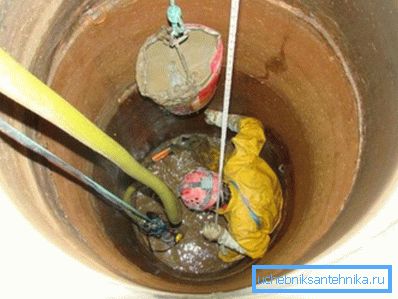
Preparation for cleaning
Water quality control
Cleaning the wells with your own hands should be done regularly - this is an axiom.
However, in order not to perform unnecessary work, you must determine in advance what signs you can begin to act.
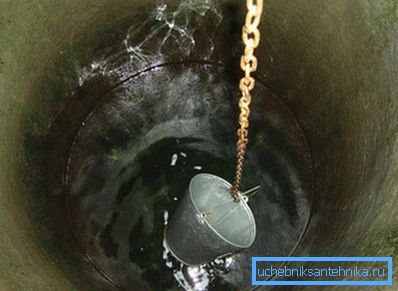
- First of all, you should pay attention to the quality of water. If grains of sand, clay or clay particles begin to appear in the bucket, then it is time to clean up the bottom of the source.
- The same goes for taste with smell. Any abrupt changes for the worse are the reason for the start of large-scale cleaning.
- Another important indicator is the level of the water mirror. If the well flow rate gradually decreases, it must be restored, and the sooner the better.
- You should also take care of carrying out “unreal cleaning” when foreign objects get into the water: branches, construction debris, animal carcasses, etc.
In any case, the sooner we notice unpleasant signals, and the sooner we start putting the source in order, the better.
Fixtures and equipment
To improve the quality and increase the water supply will have to use a variety of devices.
Do-it-yourself cleaners include:
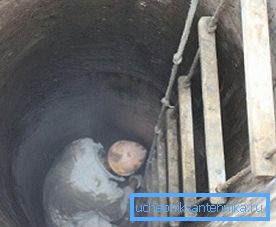
- Ladder or suspension system for work at depth.
- Winch or block system to facilitate the lifting of loads and workers (used at great depths).
- Safety system
- Brushes for cleaning the walls.
- Shovels of various sizes to remove sludge and debris from the bottom.
- Spatulas for sealing gaps.
- Buckets or other containers for transporting sand or silt.
You can also use a variety of drainage pumps for wells. Their use allows you to remove the bulk of bottom sediments without descending into the well itself, which greatly facilitates annual prevention.
Note! But the grab for cleaning wells with your own hands should not be used. The use of this technique, designed for excavation of large volumes of soil, can lead to unpredictable consequences, the flesh before the formation of a landslide crater. So it is better to leave this task to professionals.

Safety
When we clean the well with our own hands, we must not forget about our own safety and the health of all participants in the process.
Moreover, the one hundred rules that should be followed are quite simple:
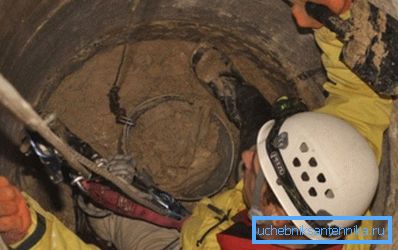
- Before falling under the ground, we are convinced that there is no gas pollution in the space. If necessary, we provide forced ventilation.
- All work is done with the use of personal protective equipment: boots, gloves, thick waterproof clothing, etc.
- It is desirable to have a helmet and respirator / gas mask.
- Going down to the well, be sure to wear a safety system.
- When working with a pump and other devices we observe electrical safety techniques.
Performance of work
Manual cleaning
Self-cleaning of wells is usually carried out according to this scheme:
- First we pump out the liquid, lowering its level to a minimum. Ideally, a silted bottom should be exposed.
- We lower down the stairs or the suspension system, and gradually begin to descend.
- When descending with the help of brushes and scrapers, we remove all layers from the walls.
Note! Only mechanical cleaning is allowed. Under no circumstances should chemical cleaners be used.
- During cleaning, we carefully inspect the seams between the rings, which limit the inner chamber of the well. The cracks are sealed with compositions based on liquid glass and cement.
- Reaching the bottom, we begin to remove sediment silt, clay and sand. For this it is convenient to use a sapper shovel, scooping liquid mud and removing it to the surface with a bucket.
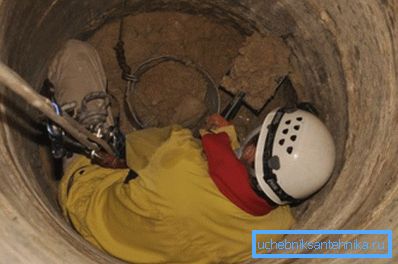
Tip! When working at the bottom, do not stand long in one place: the sludge can suck your leg, and it will be quite difficult to get out. Take as a rule to take with you a clumsy knife in a case - in extreme cases it will be possible to cut the bootleg and free yourself.
- The upper part of the gravel filter is also removed, washed on the surface with water and laid into place.
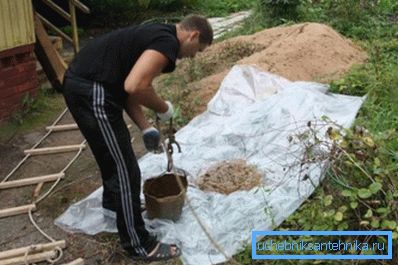
After the end of cleaning from mechanical impurities we perform disinfection:
- Walls are treated with bleach.
- The remains of bleach is poured to the bottom.
- The neck is covered with plastic wrap so that the released gas is kept inside.
- After two days, open the film and wash the walls with water from the tap.
- To remove chemical residues, we pump out all the water from the well twice.
Note! Pumped liquid can be used exclusively for technical purposes. It is not suitable for drinking, cooking or watering.
Pumping liquid sludge
Cleaning the well with your own hands can be done with the help of a drainage pump:
- For work we use a model that can cope with contaminated liquid.
- Use standard well pumps should be at your own risk and risk, subject to regular flushing.
- Before starting, the instruction recommends cleaning the walls and removing large debris according to the algorithm given above.
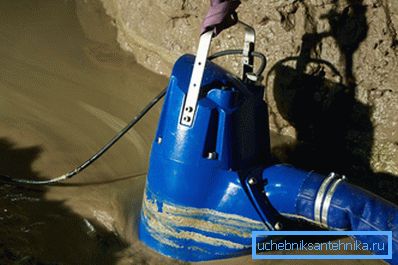
- The pump is suspended in such a way that the water intake is carried out at a distance of about half a meter from the bottom. Then during the absorption not only water, but also clay particles, silt and sand will be captured.
- We continue pumping until a clear liquid starts to flow from the outlet nozzle.
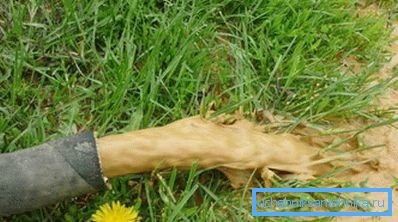
The disadvantage of this technique is high water consumption.
If we want to optimize the process, then water purification from the well with the hands will be organized:
- In the big barrel we install two pipes: the upper one is connected to the drainage pump, and the lower one is used to drain the water.
Tip! Instead of a barrel, you can use a plastic cube of large volume: although its price is much higher, the efficiency of such a system will increase by an order.
- To improve the filtration of the well, you can add several grids, but then the process will slow down a bit.
- When water from the well enters the barrel, sedimentation of silt, sand and clay to the bottom occurs. The clarified liquid with a minimum of impurities exits through the drain hole.
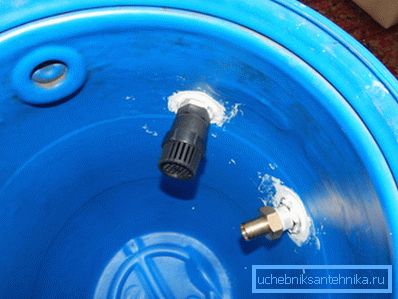
- For the best cleaning of the well itself, the water drained from the sand filter is passed through a surface pump and fed under pressure into the bottom layer of sludge. A jet of water destroys the deposits, and they are captured by a drainage pump.
- As a result, we achieve the best quality cleaning with minimal water.
After completion of drainage, let the water settle and conduct a control fence. If we did everything right, in the bucket will be clean water without foreign smell and taste.
Conclusion
The above tips on how to clean the well with their own hands, can be useful not only for beginners, but also for experienced craftsmen. The final result depends largely on your accuracy and accuracy of compliance with all the rules of work, so before you start it is worth studying the recommendations and carefully watch the video in this article.